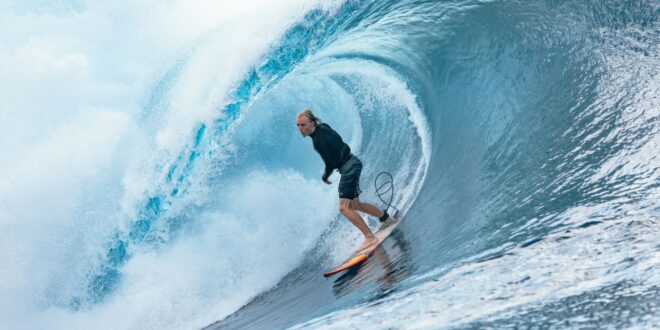As you start progressing in your surfing game, you will feel the rush to get on the big ones. Although catching big waves is not a herculean task, it needs you to master certain tricks. These tricks are very simple but require time and regular practice.
For simplifying your work, we have listed 8 important tips that can help you learn the skill easily.
1. Find Bigger Waves
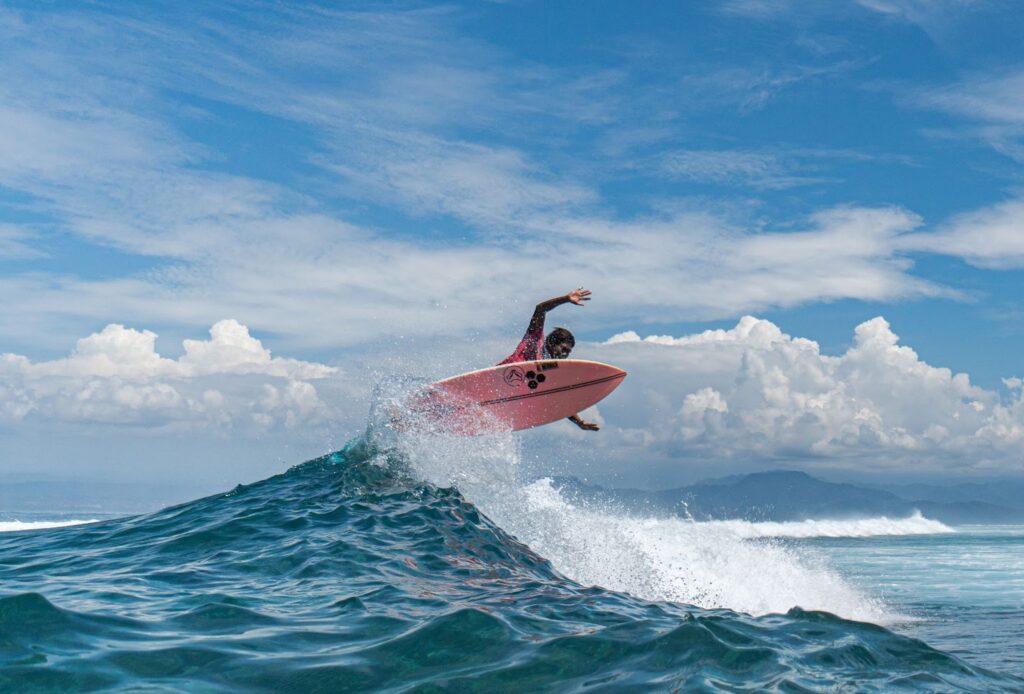
The first very important step towards surfing big waves is finding one! Although waves are largely controlled by the weather, wind, and current, usually beaches experience the biggest waves in the winter. Therefore, if you want to surf bigger waves, wait for the cold season to arrive.
However, one crucial thing to note here is that you should never go surfing if the water is colder than 77 °F. At this temperature. The water is most likely to affect your breathing. For more details, you can consult Ombe.
2. Practise Breathing
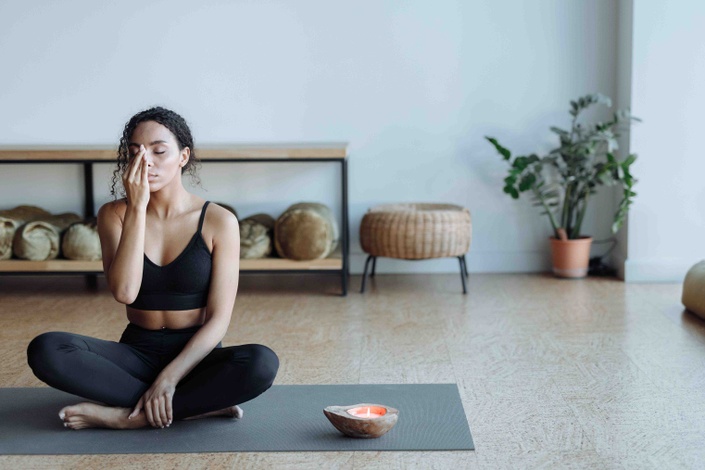
The practice of breathing is very important to make yourself more confident in surfing sport. The bigger the waves, the harsher they will come crashing. Therefore, it is very important to train yourself to hold your breaths for long to avoid losing balance midwater.
In order to train yourself to hold your breath for a long, keep practising it every day. You can practise both on land as well as in pools. When practising in pools, you can utilise the simple bubbling technique to prolong your breathing underwater.
Besides underwater, controlled breathing helps you maintain your balance while you are surfing. As you progress in the surfing game, you will more likely switch over to the shortboards. Easy breathing helps you stay balanced even on the short surfboards.
3. Use Big Wave Gun Boards
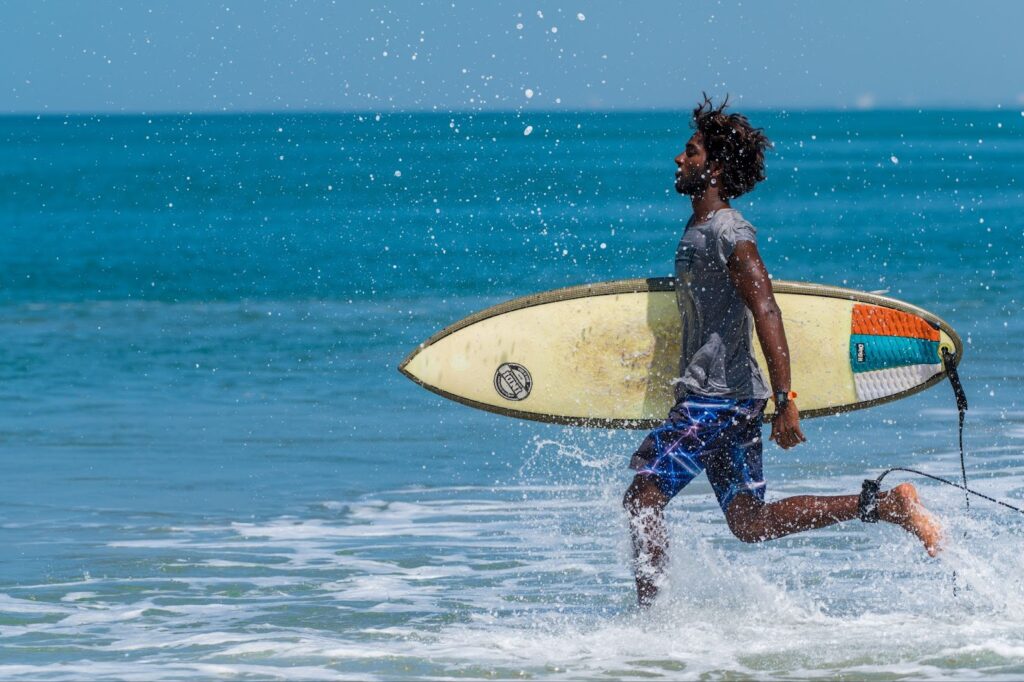
Equipment plays a major role in determining your overall surfing experience. As for surfing high waves, it is very important that you choose big wave gun boards. These boards are specifically designed for professional surfers who like big waves.
These boards range from 6ft 6ins to 10ft. They are extra-thick, as well as extra-long which ensures that the surfer feels secure throughout the surfing experience. Their tail and nose are usually very narrow to allow full contact with the water. The extra length and volume will help you knife into waves early enough to negotiate the drop and to have a good amount of rail in the water when turning.
4. Communicate
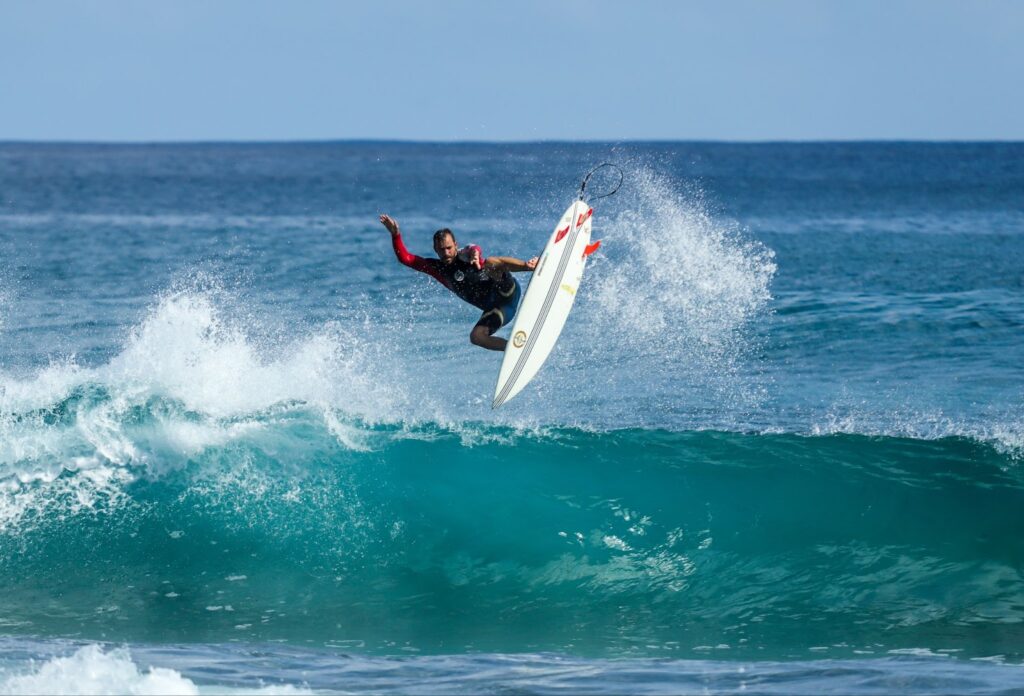
Clear communication with fellow surfers is very important for various reasons. Surfing is more like a community sport where a group of people are playing together. Since surf ethics state that only one surfer can ride a wave at a time, clear communication can increase your chance of catching the big wave without bumping into a fellow surfer.
Since you are communicating while on the water, it is important that you are loud enough. To avoid any miscommunication, only speak what is necessary. For instance, ‘I am moving right’, I will take this one etc. It becomes crucial for A-frames waves which can be both rights and left.
5. Keep Exploring
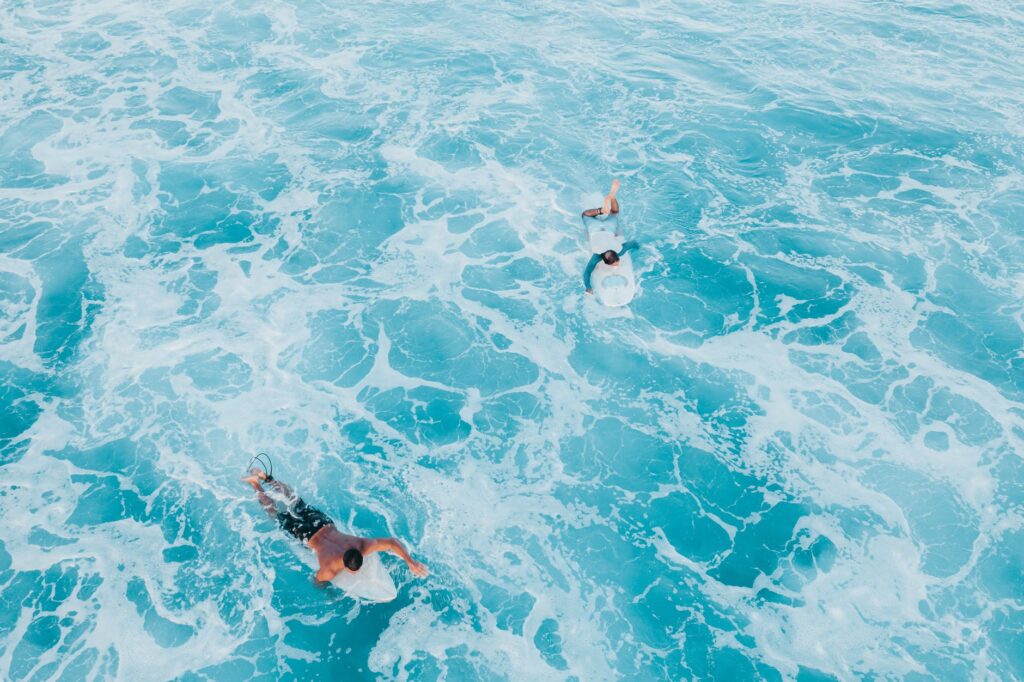
Big waves can come crashing from anywhere. To increase your chance of catching a big wave, it is important that you keep moving around in the water. Please avoid ‘sitting inside’ or you will never catch the big one.
‘Sitting inside’ refers to waiting for waves further back than most of the other surfers. This technique helps to catch the smaller, less perfect waves that surfers in front of you don’t want, or can’t paddle for.
But you will not catch the big waves in this position. Therefore, avoid it totally. Get out of other surfers’ lines. Sitting on the inside means you have no priority on any waves that the surfers in front of you want to catch.
6. Position Yourself Strategically
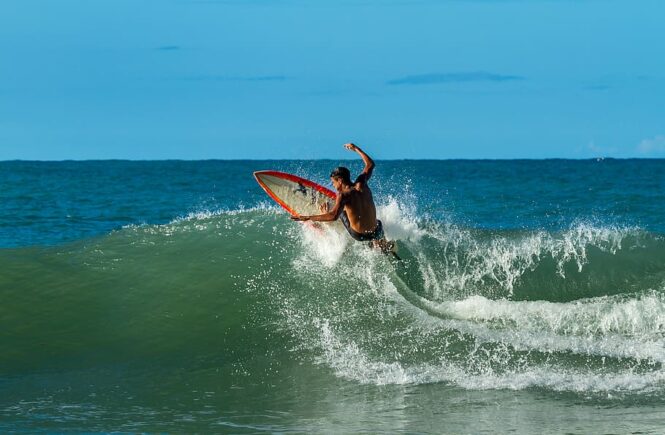
For catching a big wave, it is imperative that you are in the right position or you will not catch any big ones! The right position would mean alot of different things. First of all, you should place yourself among less experienced surfers.
The reason is that around professional surfers, your chance of catching a good wave reduces considerably. The experience of these surfers allows them to read the waves early and hence your opportunity is gone. Therefore, sit with newbie surfers or professionals with who you are friends.
A professional who is your friend will not only allow you to ride high waves but will help you to get one easily. He can guide you with tips and tricks.
7. Improve Your Wave Reading Ability
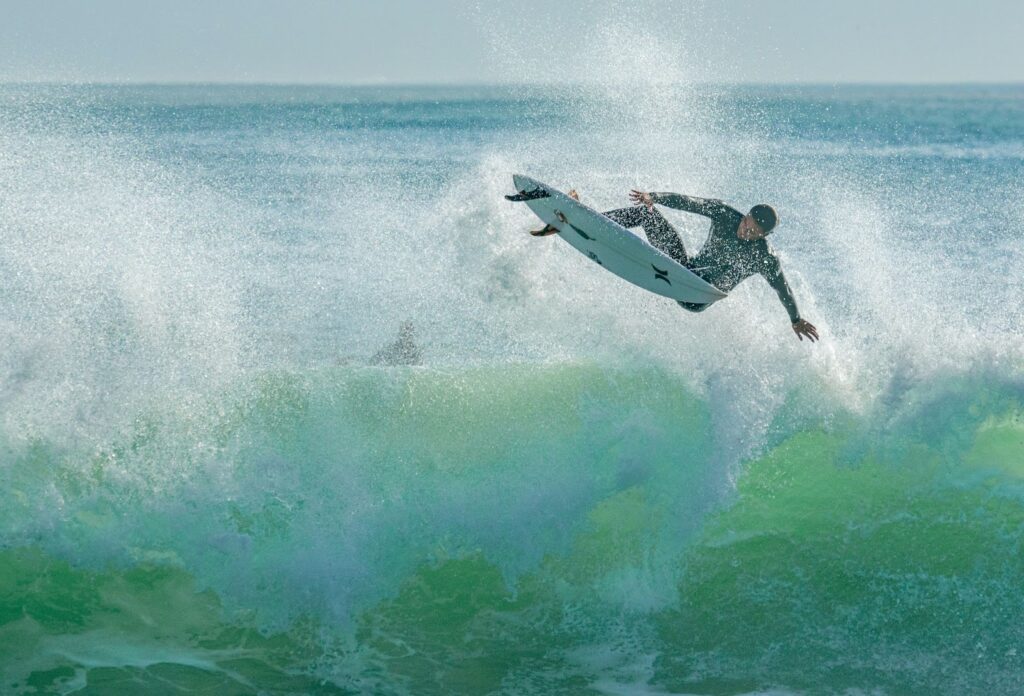
Wave reading ability can go a long way in acing your surfing game. This trick works both for beginners and professionals alike. Irrespective of how far you have come in the surfing journey, observing the waves remain a very crucial step.
For this, it is important that you know the various types of waves. Generally, waves are classified as right, left, a-frame or a closeout. The names are given based in the direction in which the wave breaks. The next step is to identify the different parts of the waves that are lip, face, curl, white water, impact zone, barrel, and peak.
Now that you know about the different parts of the wave, you are good to go. Look for a lump in the ocean as you stand on your surfboard. When the lump furthers out, try to identify the highest point of the wave. This is where the wave will break. Quickly paddle to the spot and get on!
8. Paddle Properly
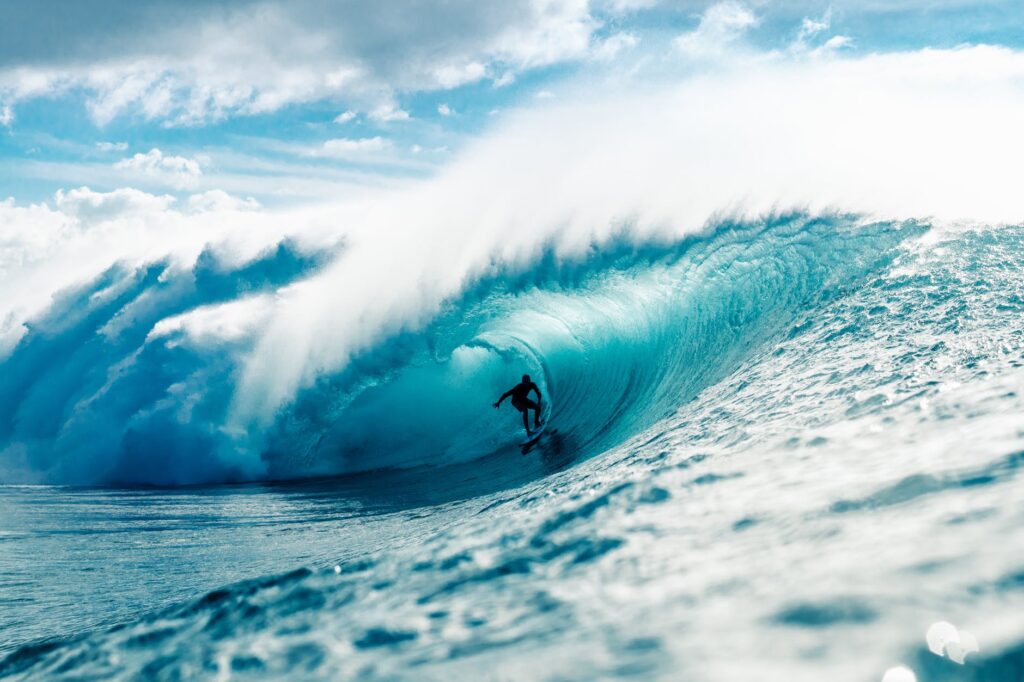
A quick paddling is important to catch the big wave in time. A trick to catch better waves is constantly looking at the shoulder on which you want to surf. You want to be taking quick looks at it when you paddle to a wave when you turn around to paddle into it, and as you take off.
Entering the wave properly is very important for ensuring it. Looking at the shoulder will give you an idea If you should paddle straight and carve down the bottom of the wave, or paddle with an angle an trim through the middle of the wave’s face.
Your Takeaway
Besides these above-mentioned tricks, you must understand that like any other sport, patience is the key to acing any sport. Therefore, take your time and try to master these tricks patiently.
 Imagup General Magazine 2024
Imagup General Magazine 2024
